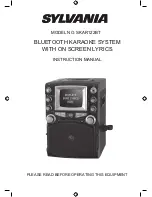
V4.0
200A Multi-Process Welder with LCD Display
8785115
Visit www.princessauto.com for more information
9
20. When working above floor level, use a safety belt to protect yourself from a
fall should you get a shock.
21. The electrode, electrode reel, welding head, nozzle and semiautomatic
welding torchs are electrically ‘hot’ when the welding unit is in
semiautomatic or automatic wire welding mode.
FIRE AND EXPLOSION PRECAUTIONS
Arc welding can produce sparks, hot slag or spatter, molten metal drops and hot
metal parts that can start fires.
1. Clear the floor and walls of an area of all combustible and/or flammable
materials up to 39 ft (12 metres) away from the welding unit. Hot debris
ejected during welding can land at a considerable distance away. Solid
floors of concrete or masonry is the preferred working surface.
a. Cover any combustible material with fire resistant covers or shields, if
it cannot be removed. The covering must be tight and should not
leave openings for sparks or ejected slag to enter.
b. Check both sides of a panel or wall for combustible material. Remove
the combustible material before welding.
2. A combustible floor should be protected with a fire resistant covering.
Alternatives are to spray the floor with water to keep it wet for the duration
of the welding or cover with damp sand. Care must also be taken to avoid
an electric shock when this is done. A combustible floor directly laid onto
concrete does not need to be sprayed with water.
3. Seal cracks and openings to adjacent areas that a spark or slag can enter.
Seal any openings found with a fire-resistant cover. Shut doors and windows
that do not provide ventilation or erect protective screens in front of them
when possible.
4. Avoid welding near hydraulic lines or containers containing flammable
contents.
5. Do not perform any welding work on containers that held flammable or
toxic substance, until they are cleaned by a person trained in removing
toxic and flammable substances and vapours per the American Welding
Standard AWS F4.1.










































